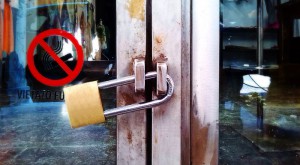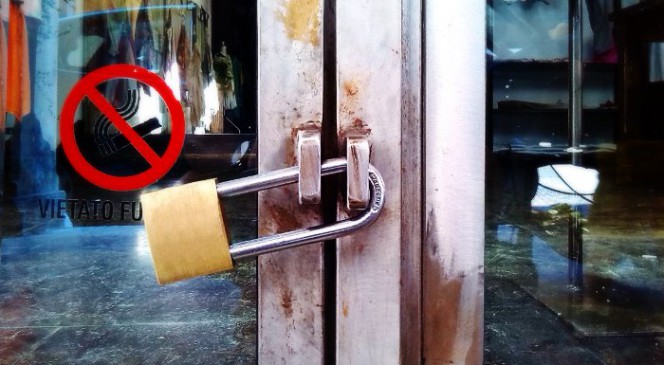There are of many types and sizes of padlocks and it is not always easy to understand when it is appropriate to use one model rather than another. One particular type of padlock is that with a long shackle, which can be very useful in some specific cases, but which, unfortunately, is often misused. Let’s see why.
The shackle is the most delicate point
Let’s start by saying that the shackle is the most critical point in a padlock from the security point of view. Firstly, it is the component of the padlock which physically performs the closure. If one manages to break it or tear it away the padlock is neutralised. Also, as it must be inserted in the body, it must necessarily be smaller than the body and therefore potentially weaker. It is therefore natural that this tends to be the preferred attack point for thieves. For this reason, the shackles are generally made with materials which are more resistant than the bodies. The shackles of the Viro rectangular padlocks are, for example, manufactured from casehardened, tempered and copper, nickel and chrome-plated steel.
For this reason it should be exposed as little as possible
As the shackle is potentially the most attackable part of a padlock, it follows that one should choose a padlock which, once attached, leaves the shackle exposed as little as possible. In other words, the length of the shackle must be as short as absolutely possible to enclose the locking points, and nothing more. Padlocks with long shackles are therefore only used in situations where the length of the shackle is actually required, for example to close fixing points which are far from each other or to embrace large objects. Otherwise, it is more secure to use padlocks with standard shackles.
It is even better, whenever possible, to use padlocks with rotary rods, such as the so-called “shutter padlocks”, which can also be used in many other situations. In these models, the shackle is replaced by a rod which has two great advantages:
- it is far less exposed compared to a shackle.
- in the best models, such as the Viro padlocks, it rotates, and is therefore more difficult to cut.

The photo shows a classic example of a padlock with a long shackle used inappropriately. In this case it would be particularly easy for a potential thief to attack the shackle with a cutter or, even more simply, with a simple crowbar.
Therefore, in the case of the padlock’s shackle, a larger diameter is a strong point, because it makes it more difficult to cut, whilst an excessive length compared to the distance between the locking points is, on the other hand, a weak point to be avoided.
The choice of the best padlock therefore always depends on the value of the asset to be protected and the most suitable type of fixing possible.
